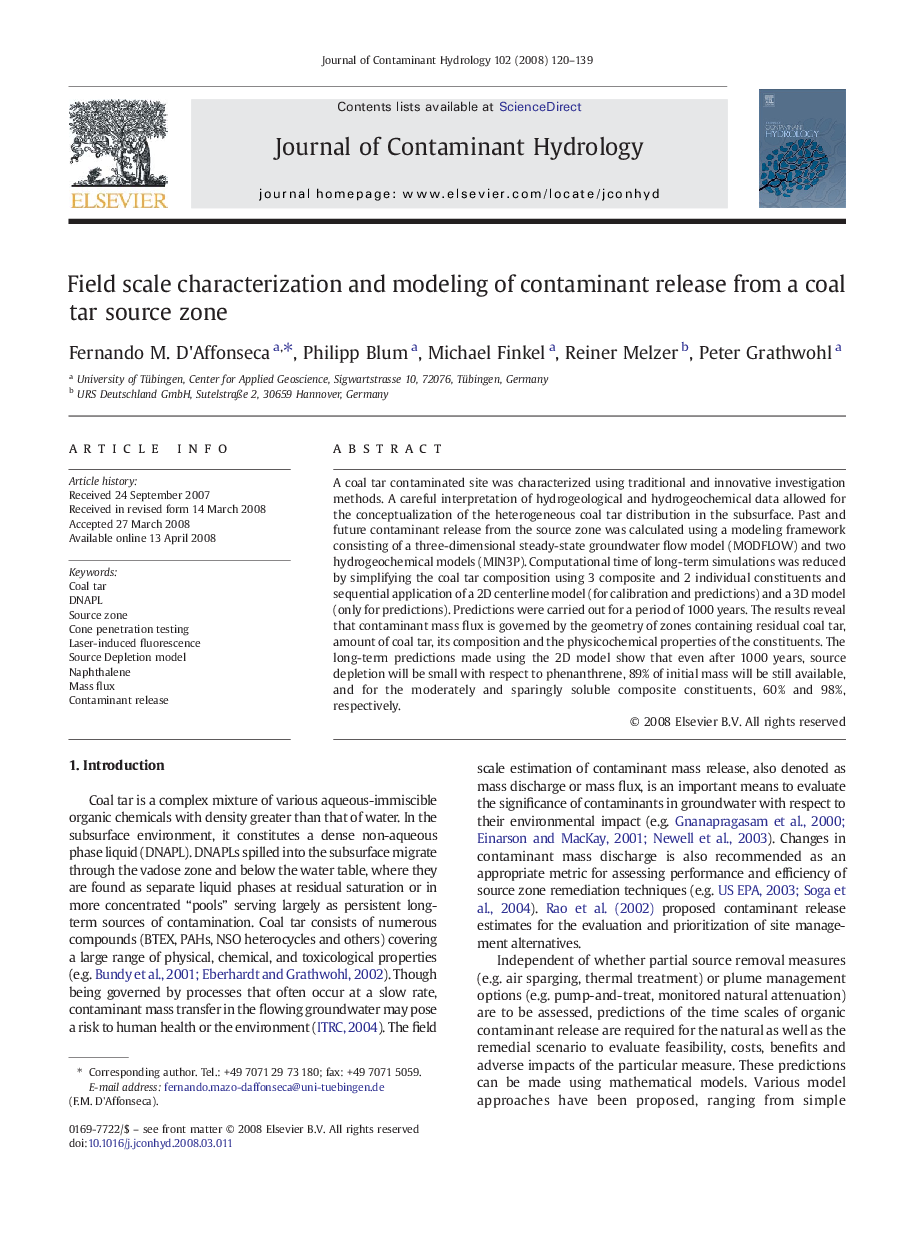| Article ID | Journal | Published Year | Pages | File Type |
|---|---|---|---|---|
| 4547368 | Journal of Contaminant Hydrology | 2008 | 20 Pages |
Abstract
A coal tar contaminated site was characterized using traditional and innovative investigation methods. A careful interpretation of hydrogeological and hydrogeochemical data allowed for the conceptualization of the heterogeneous coal tar distribution in the subsurface. Past and future contaminant release from the source zone was calculated using a modeling framework consisting of a three-dimensional steady-state groundwater flow model (MODFLOW) and two hydrogeochemical models (MIN3P). Computational time of long-term simulations was reduced by simplifying the coal tar composition using 3 composite and 2 individual constituents and sequential application of a 2D centerline model (for calibration and predictions) and a 3D model (only for predictions). Predictions were carried out for a period of 1000Â years. The results reveal that contaminant mass flux is governed by the geometry of zones containing residual coal tar, amount of coal tar, its composition and the physicochemical properties of the constituents. The long-term predictions made using the 2D model show that even after 1000Â years, source depletion will be small with respect to phenanthrene, 89% of initial mass will be still available, and for the moderately and sparingly soluble composite constituents, 60% and 98%, respectively.
Related Topics
Physical Sciences and Engineering
Earth and Planetary Sciences
Earth-Surface Processes
Authors
Fernando M. D'Affonseca, Philipp Blum, Michael Finkel, Reiner Melzer, Peter Grathwohl,
